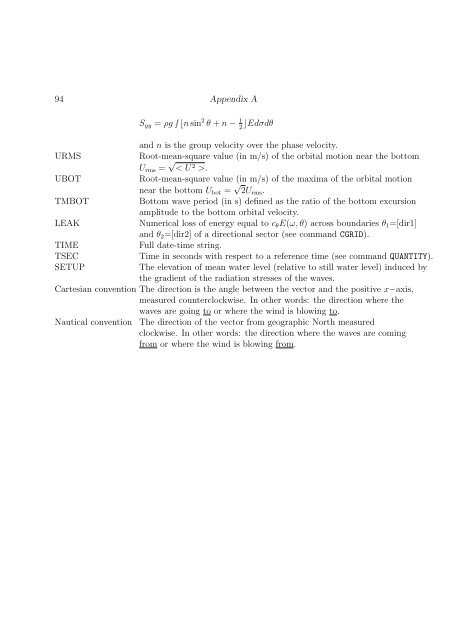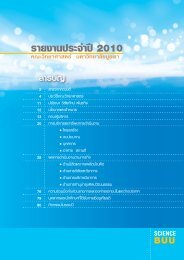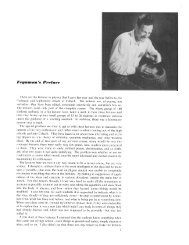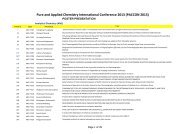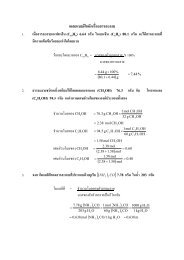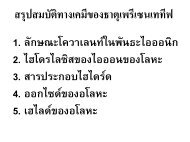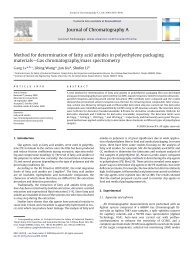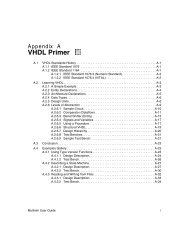USER MANUAL SWAN Cycle III version 40.72A
USER MANUAL SWAN Cycle III version 40.72A
USER MANUAL SWAN Cycle III version 40.72A
Create successful ePaper yourself
Turn your PDF publications into a flip-book with our unique Google optimized e-Paper software.
94 Appendix A<br />
URMS<br />
UBOT<br />
TMBOT<br />
LEAK<br />
TIME<br />
TSEC<br />
SETUP<br />
S yy = ρg ∫ ⌊n sin 2 θ + n − 1 2 ⌋Edσdθ<br />
and n is the group velocity over the phase velocity.<br />
Root-mean-square value (in m/s) of the orbital motion near the bottom<br />
U rms = √ < U 2 >.<br />
Root-mean-square value (in m/s) of the maxima of the orbital motion<br />
near the bottom U bot = √ 2U rms .<br />
Bottom wave period (in s) defined as the ratio of the bottom excursion<br />
amplitude to the bottom orbital velocity.<br />
Numerical loss of energy equal to c θ E(ω,θ) across boundaries θ 1 =[dir1]<br />
and θ 2 =[dir2] of a directional sector (see command CGRID).<br />
Full date-time string.<br />
Time in seconds with respect to a reference time (see command QUANTITY).<br />
The elevation of mean water level (relative to still water level) induced by<br />
the gradient of the radiation stresses of the waves.<br />
Cartesian convention The direction is the angle between the vector and the positive x−axis,<br />
measured counterclockwise. In other words: the direction where the<br />
waves are going to or where the wind is blowing to.<br />
Nautical convention The direction of the vector from geographic North measured<br />
clockwise. In other words: the direction where the waves are coming<br />
from or where the wind is blowing from.


